

We may earn revenue from the products available on this page and participate in affiliate programs. Learn More ›
Every year, fall reintroduces us to a raft of pleasures available in no other season—hot apple cider, pumpkin carving, and so much more. But fall also signals the return of one chore many of us dread: raking leaves. You might be surprised to learn that, according to David Mizejewski of the National Wildlife Federation, leaf-raking is an optional endeavor. Mulching leaves instead can benefit your lawn, and local wildlife as well.
While you certainly don’t want to leave a thick layer of leaves to smother the grass growing beneath, raking up and disposing of leaves that have fallen on your lawn isn’t necessarily the best option either.
Benefits of Mulching Leaves
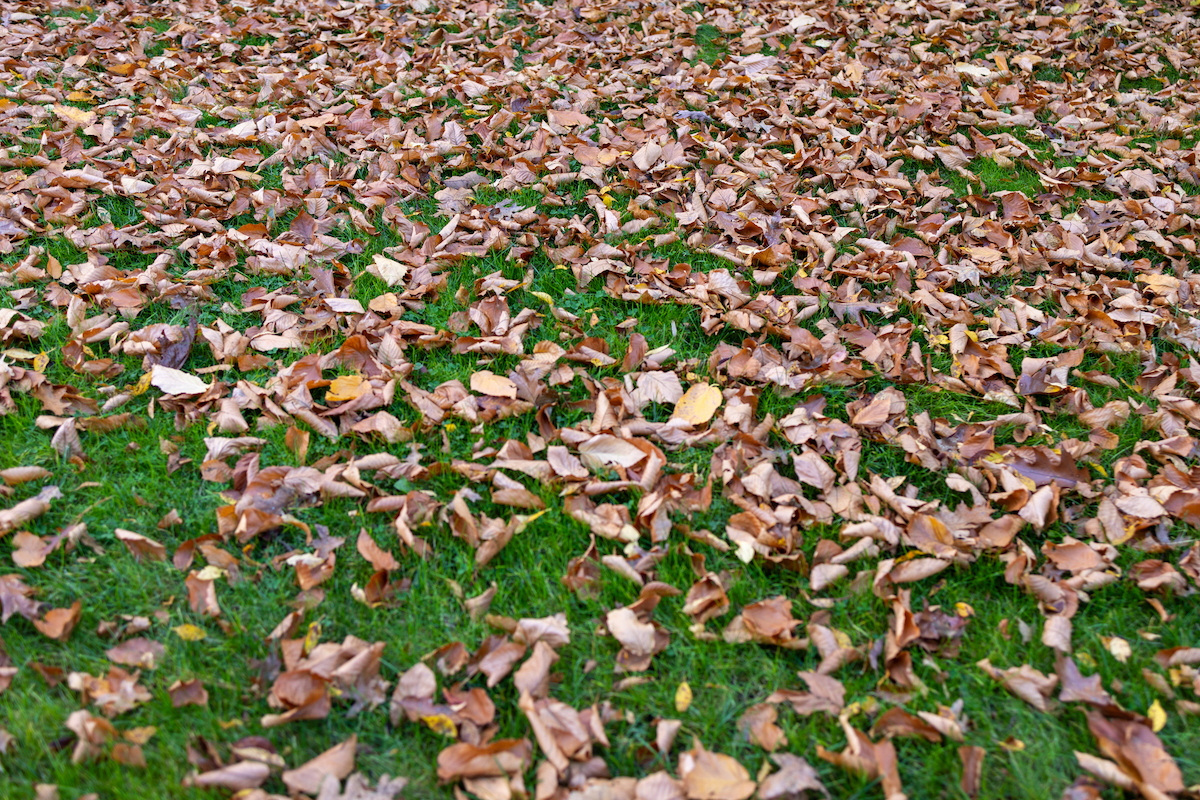
Is mulching leaves good for your lawn? Absolutely, according to Sal Musto, founder of SalCorp Landscaping & Construction in Walpole, Massachusetts. “Mulched leaves create habitat for wildlife like worms, insects, and birds,” he says. “Small animals may use them for shelter. The decomposers and foragers establish a healthy ecosystem in your yard,” he adds.
While cleaning up fallen leaves can have its place in lawn care, choosing to mulch leaves instead of raking and bagging them benefits both the gardener and the garden. Mulching leaves can:
- Improve the health of your soil: Decomposing leaves add nutrients to the soil, which in turn can nourish your grass.
- Have a positive impact on the ecosystem: Beneficial insects and microorganisms will benefit from the shelter the leaves provide as well as the nutrients they impart. For instance, many species of butterflies and moths overwinter as eggs, pupae, or adults in leaf litter.
- Implement a weed barrier: Regularly mulching leaves and leaving a thin layer on the grass can cut down on weeds after a few years.
- Save money: No need to purchase plastic garbage bags or kraft paper leaf bags.
- Reduce air pollution: Relying on neither city pickup nor a noisy, gas-powered leaf blower helps support a healthy environment.
- Create mulch for other areas of the garden: Spread the wealth of nutritious mulch to other parts of your landscape.
- Save time: Mowing to mulch is considerably quicker than raking, bagging, and hauling.
How to Mulch Leaves With a Lawn Mower
The best way to mulch leaves is simply to use your lawn mower. Any type of lawn mower can chop up leaves. “To mulch leaves, mow over them with the bag off, shredding them,” says Musto, although he cautions, “You may need to mow areas repeatedly.”
Many regular mowers can be outfitted with a serrated blade specially designed for mulching leaves, which can make the job much easier. This may make the process more efficient, but it’s not necessary. No matter what type of mower you own, prepare for mulching by setting the blade, or mower height, to its highest setting. Then, remove the bag that collects clippings.
Step 1: Spread leaves out with a rake.
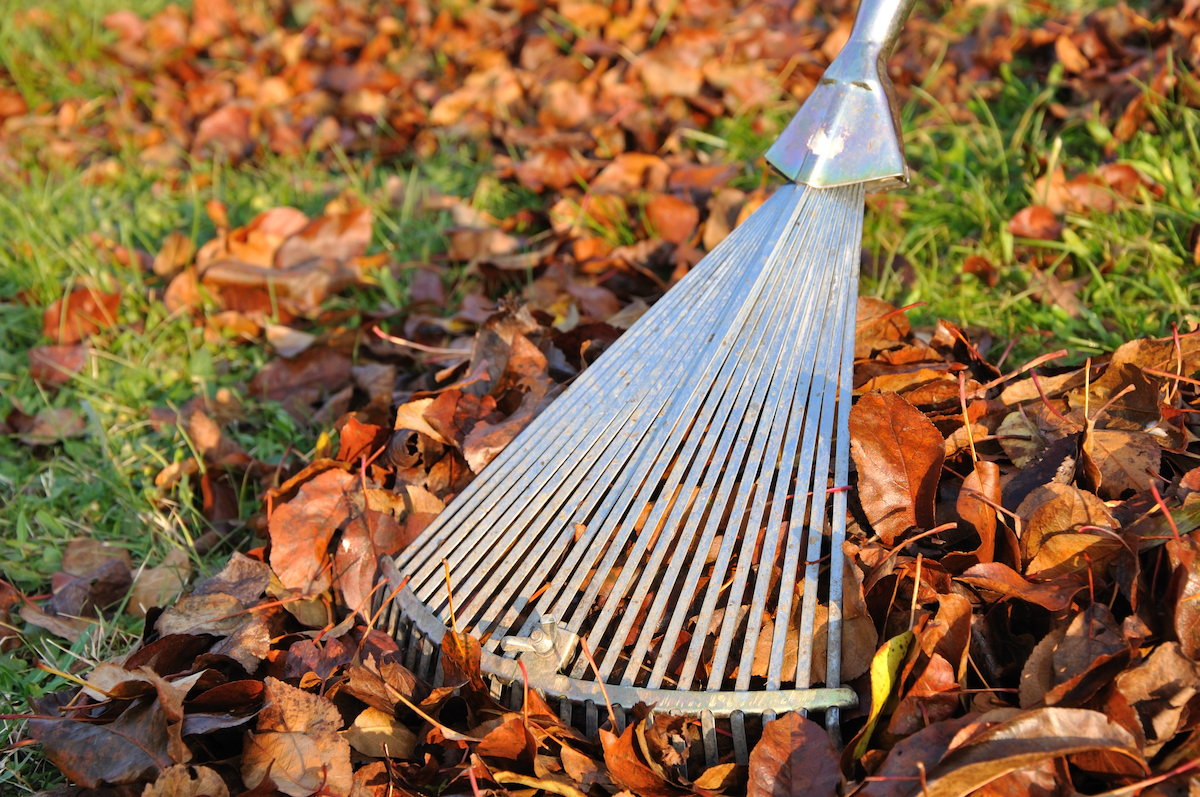
If the piles of leaves are especially deep, you may need to spread them out or pick up some from the top. Turfgrass specialists at Michigan State University say that you can mulch up to 6 inches of leaves at once, but you’ll first want to confirm that your mower can handle a layer that deep. For maximum coverage, it’s best to rake your leaves into a thin, even layer on your lawn, and then mow them.
Step 2: Shred leaves into dime-size pieces.
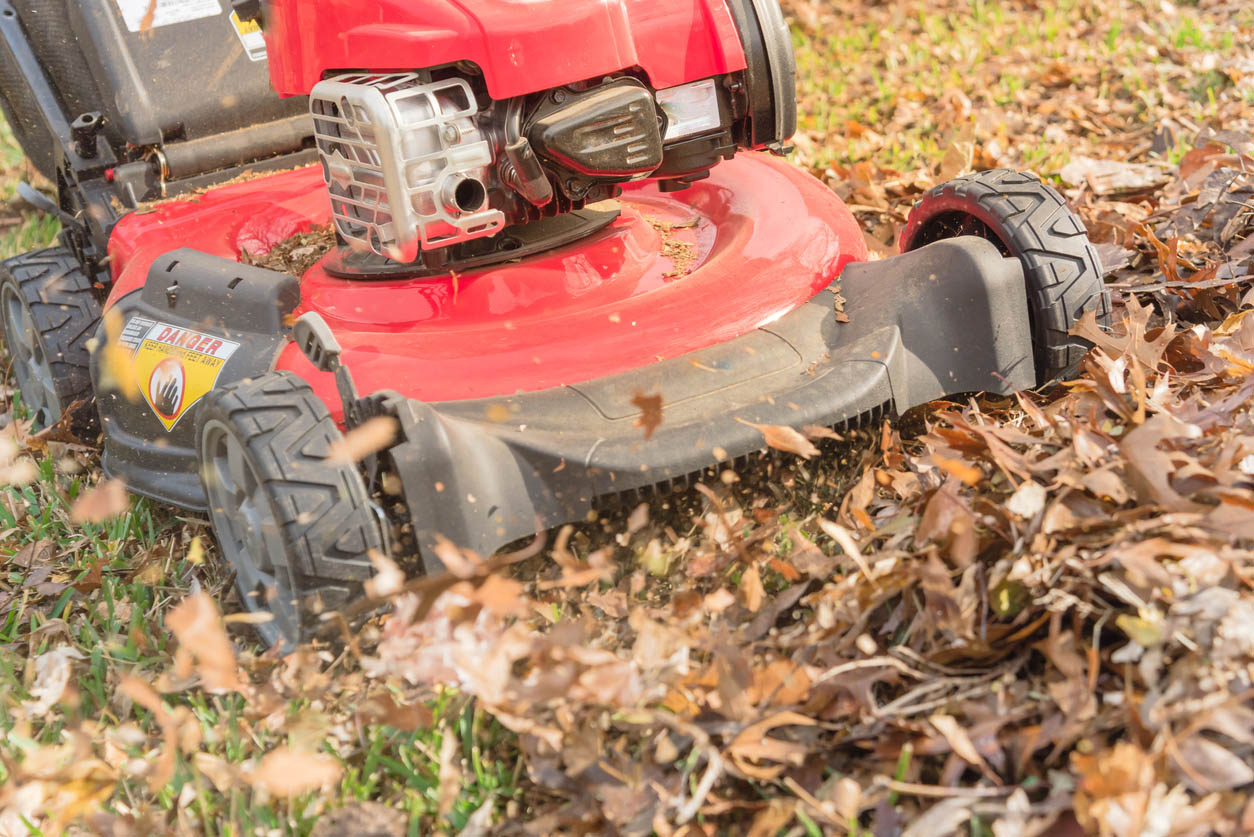
Mow the lawn just as if it were any other day, although it might actually be the most exciting day of your life—the day you finally break free from the tyranny of raking leaves. When it comes to mulching leaves with a lawn mower, the goal is to cut the leaves into shreds that are about a half-inch in diameter (more or less the size of a dime). “The key is to mulch the leaves to (the right) consistency,” says Peter Pappas, who owns a landscaping company in Middlesex County, Massachusetts. “Whole leaves mat down and compost slowly, while very fine particles may blow away.”
Again, it might take more than one pass with a mower to get the shreds to the desired size, depending on the leaf type and volume. When you’re done, the leaf shreds should begin to settle between the blades of grass to reveal much of the lawn. A passerby might easily be fooled into thinking you raked, so if neatness matters, mulching still can work for you.
Step 3: Bag excess leaf mulch.

It’s a good idea to mulch leaves weekly during the height of the season so there’s not enough time between mowings for more than 6 inches of leaves to accumulate. One week, let the mowed, chopped leaves remain in place. Then the next week, add the bag collector and run over the leaves with the mower again.
When you’re done, if you look at the shredded leaves scattered across your lawn and think, “I can’t see any grass whatsoever,” do this: Reattach the bag to the lawn mower and go over the grass one last time. Then, rather than tossing the collected leaves, use them in other ways: “Add mulched leaves to garden beds, around shrubs, or in natural areas,” says Musto. As Pappas notes, “They provide nutrients in any of these places.”
Step 4: Use leaf mulch to fertilize the lawn.
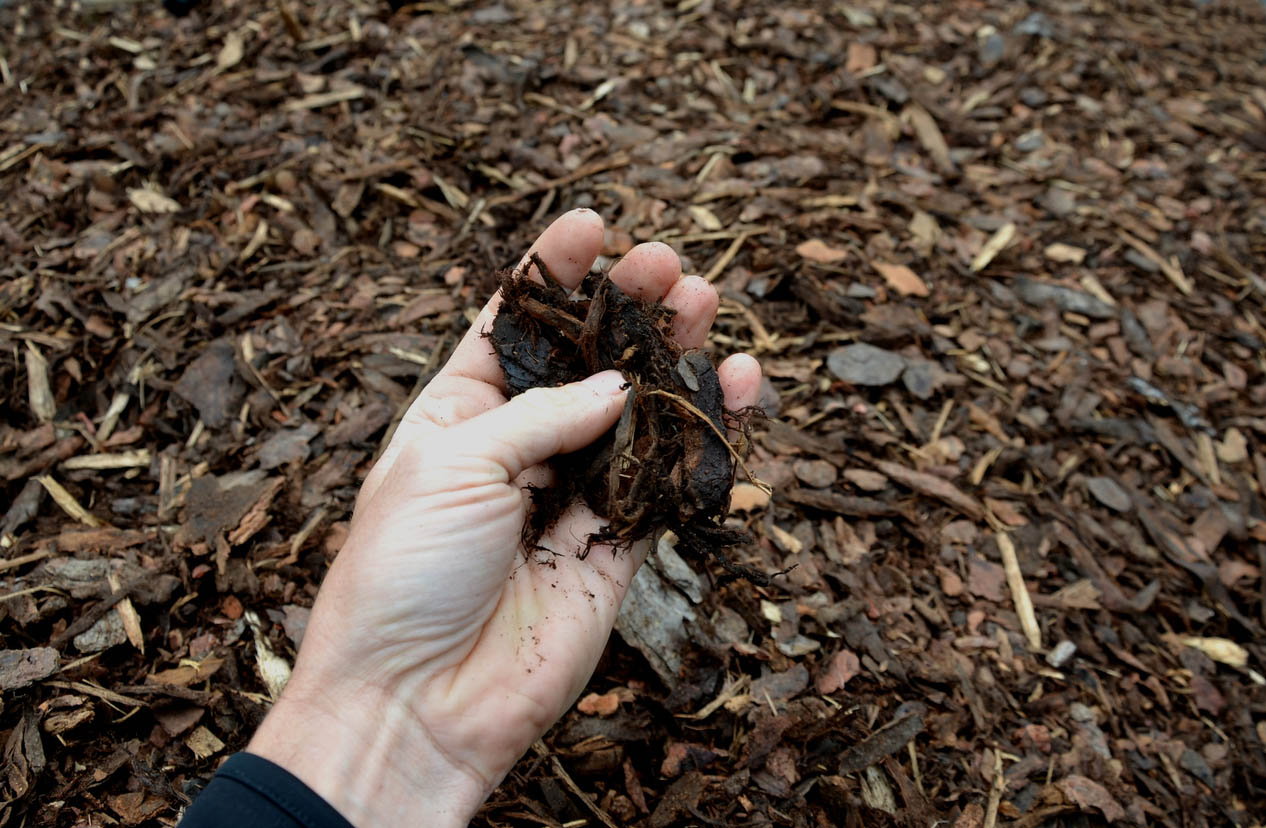
Decomposing leaves enhance the soil with valuable nutrients that feed the microbes and worms present in any healthy lawn. The nitrogen boost provided by mulched leaves may mean that you don’t even have to fertilize in the fall.
Compared with raking, mulching leaves is easier, more lawn-friendly, and less costly, saving you time and money spent bagging leaves and fertilizing. It’s a shame for leaves to sit by the curb in tightly knotted plastic bags when they could be nourishing your grass or garden beds.

Smart Ways to Use Leaf Mulch
In addition to simply letting the leaves sit on your lawn to break down and nourish your turfgrass and its ecosystem, you can also remove the mulched bits and use them for other purposes:
- Add them to your compost pile to enrich it. “Mix in manure or grass clippings and keep the pile moist. Check regularly and turn it over for aeration,” says Pappas. “Mulched leaves compost quickly, turning into finished compost in just a few months.”
- Spread a layer of mulched leaves on your vegetable garden beds.
- Add a layer of mulched leaves to other landscape beds.
- Sprinkle them around trees and shrubs.
Other Ways to Mulch Leaves
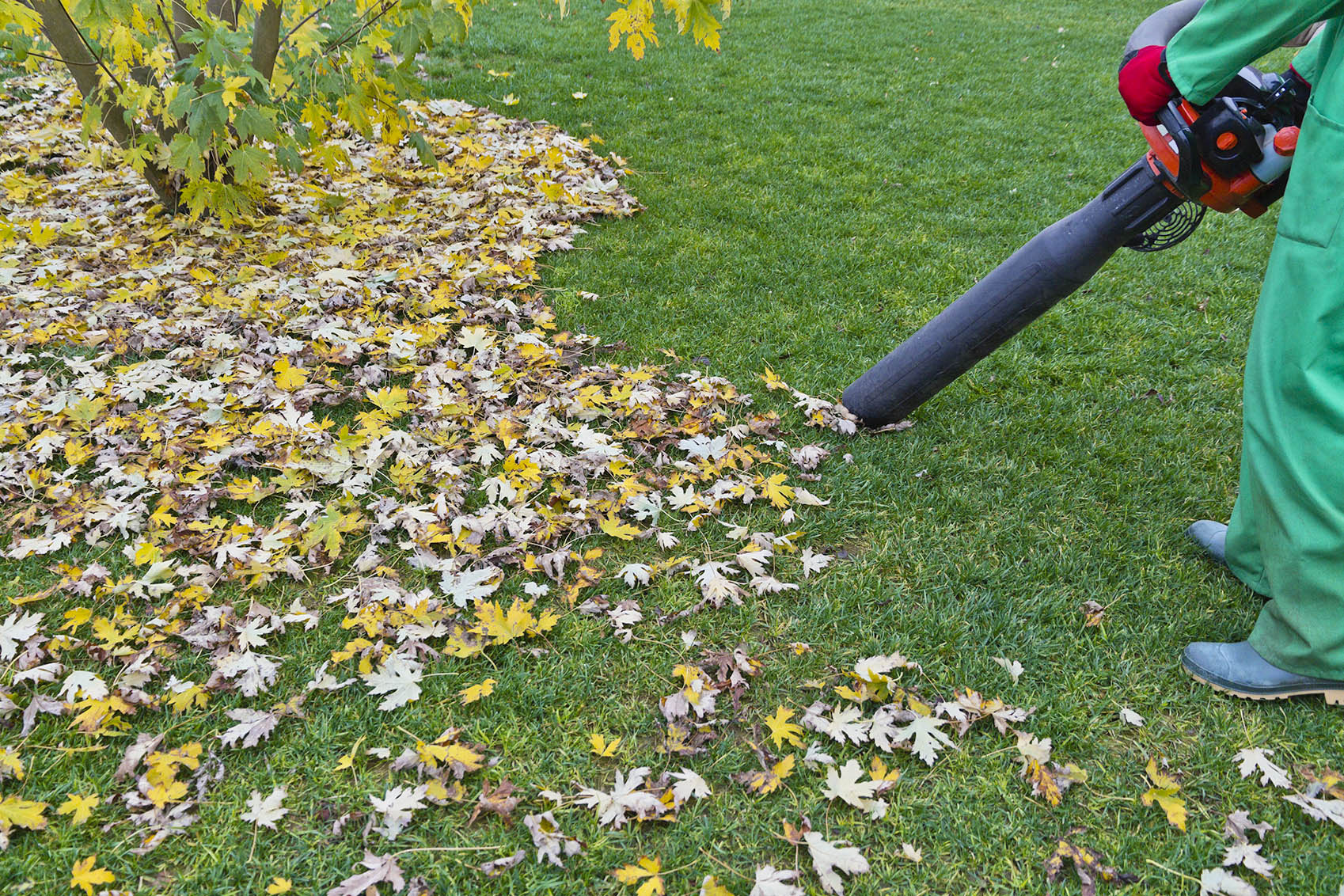
Mowing leaves to make your own mulch in fall is one thing you can do with the plethora of leaves that you get, but it isn’t the only solution. Consider these alternative methods of mulching leaves in your lawn.
- Stand-alone leaf mulcher. Built for shredding, these mulching devices look similar to wood chippers. Just dump the leaves into the hopper, let the mulcher run, and then remove the collection bag to carry the mulched leaves to another area of the yard.
- Handheld mulcher. Most leaf mulchers are handheld tools that resemble leaf blowers and can be gas-, electric-, or battery-powered. Most shred the leaves and collect them in an attached bag.
- String trimmer. If you can take a little dust (while protecting your eyes), throw your leaves into a large bucket or trash can, and insert a weed wacker to mulch leaves in a matter of minutes.
- Compost. Leaves break down in compost piles best if they have already been downsized, but full leaves mixed into the pile will eventually break down. Of course, the dime-size pieces you create with a mower or handheld mulcher can go right onto garden beds and get to work providing organic matter to the soil.
FAQs
A thin layer of leaves falling on the soil can create a tiny ecosystem beneath the tree, providing a home for beneficial insects and feeding the soil. But a thick layer mats together and can smother grass. Mulching leaves or leaving a thin layer of fallen leaves does more good than harm.
Mulching leaves and leaving a thin layer of small leaf bits between grass blades can actually help the grass, although leaving a thick layer of whole leaves can harm the grass. Mulching leaves instead of raking saves time and keeps grass healthy.
The decision to mulch or bag leaves is up to the homeowner (sometimes subject to homeowners association rules) and is largely a matter of personal preference. However, mulching leaves into small pieces is more environmentally friendly; can save money, time, and manual labor; and uses fewer plastic or paper bags.
Mulched leaves make good compost and provide a gentle, slow-acting way to improve soil health. Leaves also add nitrogen to the soil. Avoid using whole leaves, if possible, because they can mat and smother the grass and soil below. Avoid certain leaf types, such as those from black walnut trees, which slow plant growth if used as mulch.
